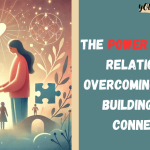
Narcissism is a term we often use in casual conversation to describe people who seem overly self-centered or arrogant. But in psychology, narcissism goes deeper than superficial selfishness. It’s a complex personality trait and, in some cases, a disorder that can profoundly impact relationships and interactions.
Understanding narcissism means diving into the nuances and recognizing that not all narcissists are the same. In fact, psychologists often categorize narcissists into three main types: grandiose, vulnerable, and malignant. Each type has distinct characteristics that influence their behavior and affect those around them.
If you’ve ever wondered why someone in your life has such a magnetic and draining presence, or why someone else oscillates between seeking validation and withdrawing, understanding these types of narcissism can provide clarity.
Let’s explore each type of narcissist, learn how to spot their traits, and discover how to manage relationships with them effectively.
WhatIsNarcissism?
At its core, narcissism is characterized by an inflated sense of self-importance, a deep need for admiration, and a lack of empathy for others. While a certain degree of self-confidence is healthy, narcissism taken to an extreme often masks deep insecurities.
Not all types of narcissism are problematic. Psychologists distinguish between healthy narcissism, which helps build resilience and self-confidence, and pathological narcissism, which disrupts relationships and personal growth. When narcissism becomes pervasive, it can lead to narcissistic personality disorder (NPD)—a diagnosable condition that requires professional intervention.
Within this spectrum, the three types of narcissists show how this personality trait manifests itself differently.
- Grandiose Narcissist
When you think of the word “narcissist,” the grandiose type is likely to come to mind. These individuals are self-confident, charming, and charismatic. They are often the center of attention, and thrive on attention and admiration.
Traits of Grandiose Narcissists:
Overconfidence: They believe they are superior and often overestimate their abilities.
Attention-seeking: Their conversations and actions are often aimed at gaining admiration or applause.
Lack of empathy: They struggle to connect with the feelings or perspectives of others.
Entitlement: Grandiose narcissists expect special treatment and can react badly when they don’t get it.
While grandiose narcissists can be charming and persuasive, they often make others feel ignored or unimportant. Their relationships can seem one-sided, as their need for validation takes precedence over genuine connection.
Real-life example: Imagine a colleague who constantly talks about their accomplishments but dismisses or ignores your contributions. They may seem inspiring at first but eventually come across as dismissive or self-obsessed.
How to deal with them: Set boundaries early. Grandiose narcissists value assertiveness and clarity but may test boundaries. Maintain your self-worth by not seeking validation from them.
- The Vulnerable Narcissist
On the surface, vulnerable narcissists may not appear to be narcissists at all. Unlike their grandiose counterparts, they may appear shy, insecure, or introverted. However, their narcissism lies in their deep need for reassurance and their hypersensitivity to criticism.
Traits of Vulnerable Narcissists:
Low Self-Esteem: They rely on external validation to feel good about themselves.
Excessive Sensitivity: They are easily hurt or upset by perceived insults or criticism.
Passive Behavior: Rather than directly demanding attention, they may skillfully manipulate others to reassure them.
Feelings of Inadequacy: Behind their outward appearance lies a fear of rejection and failure.
Vulnerable narcissists can be emotionally exhausting because they oscillate between seeking closeness and withdrawing into themselves. Their insecurities often lead to a “push-pull” dynamic in relationships, leaving others confused or frustrated.
Real-life example: Imagine a friend who constantly seeks compliments but becomes distant or cold when they don’t get enough attention. They may share their concerns with you but brush off your attempts to help.
How to Deal With Them: Be empathetic but firm. Offer support without becoming their sole source of validation. Encourage them to seek professional help if their fears dominate their interactions.
Read also: Cracking the Code: How to Trick a Narcissist into Telling the Truth
- Malignant Narcissist
The malignant narcissist is the most toxic and dangerous of the three, combining narcissistic traits with aggression, mania, and a tendency to exploit others. He also exhibits traits associated with narcissism and psychopathy, making him particularly harmful in relationships.
Characteristics of Malignant Narcissists:
Manipulative Behavior: They exploit others for personal gain, often without remorse.
Hostile: They display aggressive or vindictive behavior, especially when challenged.
Paranoia: Malignant narcissists may suspect that others have bad intentions.
Sadism: They enjoy controlling others or hurting them emotionally or even physically.
Malignant narcissists are masters of manipulation and may leave their victims questioning their reality. They create toxic environments, whether at home, at work, or in social circles.
A real-life example: A boss who undermines employees to maintain control or a partner who isolates you from friends and family to assert dominance. Their behavior erodes self-esteem and can leave lasting emotional scars.
How to deal with them: Protect yourself by minimizing contact. Seek support from trusted friends, family, or professionals. Malignant narcissists rarely change, so prioritizing your well-being is essential.
Recognizing the Impact of Narcissism
The effects of narcissism extend far beyond the individual. Relationships with narcissists—whether personal or professional—can be challenging. Their actions often create feelings of inadequacy, frustration, and confusion in those around them.
However, understanding the type of narcissist you’re dealing with is the first step to effectively managing these relationships. It allows you to customize your responses, set boundaries, and protect your mental and emotional health.
Are Narcissists Born or Made?
The origins of narcissism are multifaceted. Experts believe it develops from a combination of genetic predisposition, upbringing, and environmental factors.
Childhood Experiences: Over-praising or over-criticizing parenting can contribute to narcissistic tendencies.
Trauma: Unresolved trauma or neglect can lead to feelings of inadequacy, which can fuel narcissism as a defense mechanism.
Cultural influences: Societal values that emphasize individuality and success can exacerbate narcissistic traits.
Recognizing these roots can help us deal with narcissism with a combination of understanding and caution. While it’s important to empathize with someone’s struggles, it’s equally important to protect yourself from their harmful behaviors.
Tips for Managing Relationships with Narcissists
Set firm boundaries: Communicate clearly about your boundaries and enforce them. Narcissists often test boundaries, so consistency is key.
Don’t engage in power struggles: Narcissists thrive on conflict. Stay calm and avoid feeding their need for control.
Focus on your needs: Protect your well-being by prioritizing self-care. Surround yourself with supportive people who lift you up.
Consider professional help: Therapy can provide tools to deal with the challenges of dealing with narcissists, especially in close relationships.
Final Thoughts
Narcissism isn’t a one-size-fits-all personality trait. By understanding the three types of narcissists—grandiose, weaklings, and malignant—you can better manage their behaviors and protect your own emotional health.
Whether it’s a charismatic but demanding friend, an insecure coworker, or a toxic family member, identifying the type of narcissist you’re dealing with allows you to approach them with clarity and confidence.
While dealing with narcissism can be difficult, knowledge is power. By uncovering the different types of narcissists, you’re taking the first step toward healthier relationships and a better understanding of human behavior.
Read more: The 5 Love Languages Between a Narcissist and an Empath You Need to Know




